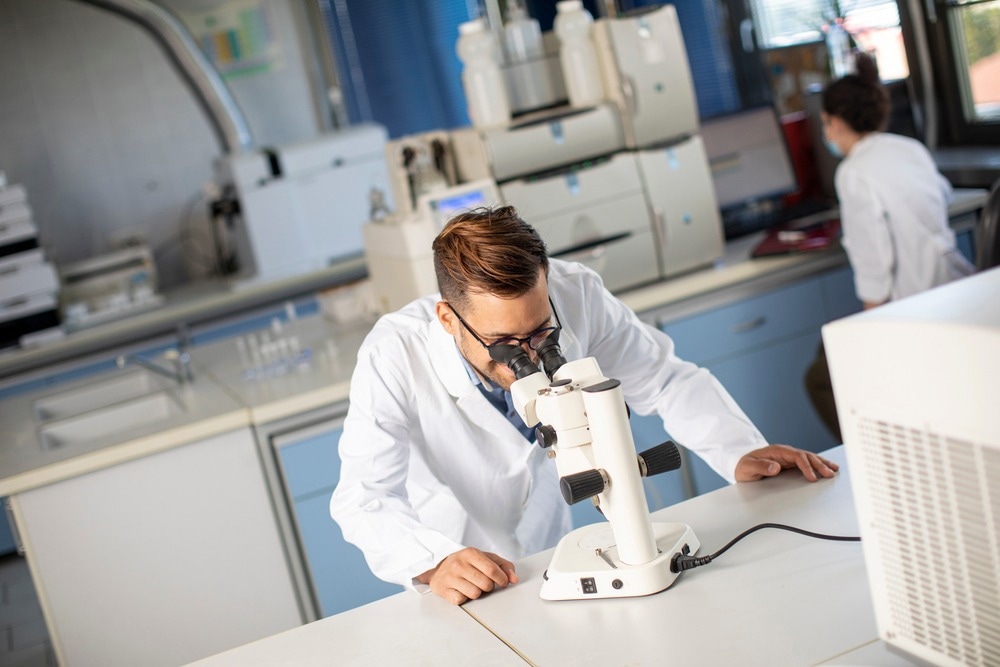 By Surbhi JainReviewed by Susha Cheriyedath, M.Sc.Oct 5 2022
By Surbhi JainReviewed by Susha Cheriyedath, M.Sc.Oct 5 2022In a review article recently published in the journal Materials & Design, researchers discussed the prospects and advances of Bletilla striata polysaccharide as potential multifunctional biomedical materials.

Study: Advances and Prospects of Bletilla Striata Polysaccharide as Promising Multifunctional Biomedical Materials. Image Credit: BGStock72/Shutterstock.com
Background
The dried tuber of Bletilla striata is a traditional Chinese medicine (TCM) herb with a more than 1500-year history. The polysaccharide of B. striata, or the urn orchid, is known as BSP and is separate from the roots. BSP has emerged as a viable source for biomaterials since it is a naturally occurring plant polysaccharide that is both easy to produce and rich in medical benefits.
Meanwhile, contemporary researchers have found that BSP has a variety of pharmacological functions. The BSP-based biomaterials help to manufacture wound repair dressings, which are particularly of interest to medical researchers because the primary active components of B. striata promote wound healing. Currently, BSP is typically used in hydrogels, lyophilized wafers, microneedles, sponges, and films.
The development of multifunctional BSP-based biomaterials still has several fundamental issues that need to be resolved, including the standardization of raw material selection and preparation, the relationship between the molecular weight, structure, biological activity, and prepared biomaterials' properties, as well as the problems with clinical transformation and market industrialization. On the other hand, the growth of regenerative medicine, creative formulations, nanotechnology, and other multidisciplinary fields has created new potential for BSP science.
About the Study
In this study, the authors discussed the preparation, characterization, and structural characteristics of BSP. The properties of BSP-based biomaterials before and after modification are described, with insights into their possible uses. Additionally, the potential future of BSP-based biomaterials was emphasized.
The team provided the guidelines for further BSP use as a multifunctional material in biomedical sectors. The primary goal of this review was to provide an overview of BSP's physicochemical properties, preparation technique, pharmacological activity, biosafety, and the characteristics of several BSP-based biomaterial kinds.
The researchers highlighted theranostic uses of BSP in many forms, like wound healing, targeted medication administration, and biological tissue engineering. The team also discussed the current problems in the development of BSP-based biomaterials and their potential for the future.
Observations
To stimulate blood coagulation within 30 seconds without the use of an anticoagulant, the BSP/graphene oxide composite sponge (BGCS) had a porosity higher than 90% and had outstanding water absorption capacity. This material also had excellent hemostatic effects. BSP was also demonstrated to have no cytotoxic or inhibiting effects on the proliferation of IEC-18 cells based on the CCK-8 assay at doses of 25, 50, and 100 μg/ml. The following situation resulted in a BSP purity of 97.0%, which was the greatest purity recorded. This led to a BSP purity peak of 97.0%. With the aid of ultrasonic microwave synergistic extraction (UMSE), the extraction yield of BSP could be enhanced to 6.98% ± 0.19% in just 5 minutes.
The chemical composition and amount of active ingredients of BSP could be affected by the plant's growth stage and production region, environmental variables, and extraction and purifying techniques. Additionally, the majority of BSP was produced independently in many laboratories without a single source of raw materials or a standardized method of preparation, which resulted in vast variations in molecular weight and other chemical, physical, and biological characteristics. These issues could be solved by using plant molecular farming and artificial intelligence (AI) technology.
Real-time monitoring of the critical steps in the production and planting of B. striata enhanced the quality control of the drug substance and decoction components of B. striata. In order to enhance the quality of the decoction pieces, medicinal materials that contained BSP of B. striata were fully applied, and the criteria for the decoction pieces and medicinal materials of B. striata were further raised.
Despite the growing number of BSP-based biomaterials that were effectively created by researchers, the majority of recent studies remained at the introduction or animal stage, never moving to the clinic. To clarify the relationship between the structure of BSP with different molecular weights, the bioactivity, physical/chemical properties, molecular mechanism, advanced instrumental analytical techniques, and methods should be used.
Conclusions
In conclusion, this study discussed the applications of BSP as biomaterials. The team observed that the current issues and challenges with BSP-based biomaterials primarily relate to the standardization of raw material selection and preparation, the relationship between the molecular weight, structure, biological activity, and prepared biomaterials' properties, as well as the problems with clinical transformation and market industrialization.
The team mentioned that future research should concentrate on transforming BSP to produce more useful and multifunctional biomaterials. They stated that to create truly beneficial and marketable products soon, the development of novel formulations for BSP-based biomedical materials should be realized in a closed-loop manner.
References
Gou, K., Li, Y., Qu, Y., et al. Advances and Prospects of Bletilla Striata Polysaccharide as Promising Multifunctional Biomedical Materials. Materials & Design, 111198 (2022). https://www.sciencedirect.com/science/article/pii/S0264127522008206
Disclaimer: The views expressed here are those of the author expressed in their private capacity and do not necessarily represent the views of AZoM.com Limited T/A AZoNetwork the owner and operator of this website. This disclaimer forms part of the Terms and conditions of use of this website.